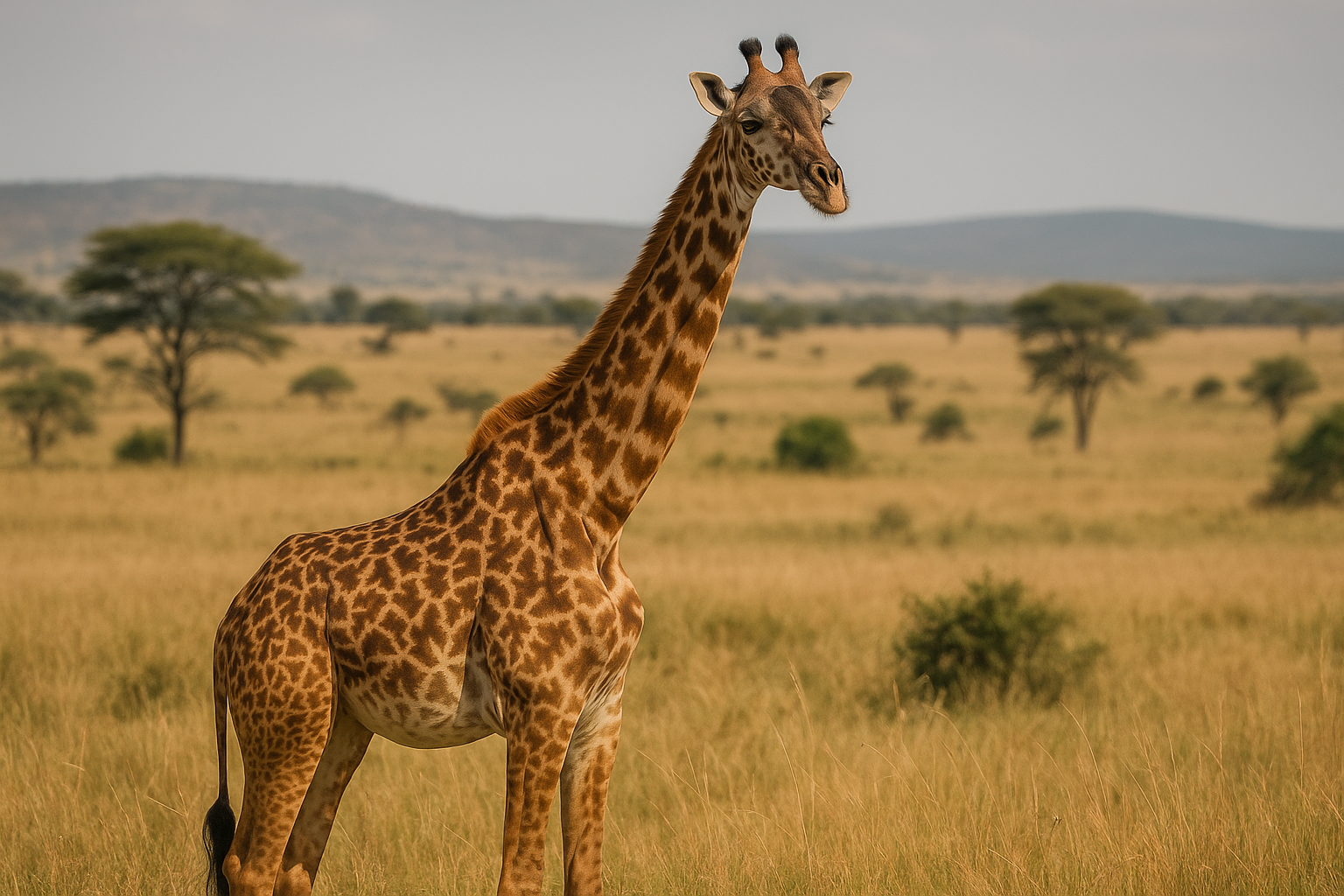The Dragon of the East: Unveiling the Majesty of the Komodo Dragon
I. Introduction: A Creature of Myth, a Lizard of Legend
In a secluded chain of Indonesian islands, where the sun sets over volcanic peaks and the forests seem to whisper secrets, lives a creature so ancient and fierce that its very name sends shivers down spines—the Komodo Dragon. It is not a beast from folklore, though it often feels like one. It is real, powerful, and the largest living lizard on Earth.
Let us begin our journey with the scientific roots of this giant reptile.
II. Scientific Classification: Building the Dragon's Ancestry
| Taxonomic Rank | Classification |
|---|---|
| Kingdom | Animalia |
| Phylum | Chordata |
| Class | Reptilia |
| Order | Squamata |
| Family | Varanidae |
| Genus | Varanus |
| Species | Varanus komodoensis |
Kingdom: Animalia
Like all animals, the Komodo dragon belongs to Animalia, a kingdom characterized by multicellular organisms that feed on other life forms and move voluntarily. The dragon's intelligence, muscle coordination, and hunting skills make it a top predator in this kingdom.
Phylum: Chordata
As a chordate, the Komodo dragon possesses a notochord at some point in its life, a spinal structure that supports its long, powerful body. This is shared with all vertebrates, including humans.
Class: Reptilia
It belongs to Reptilia, the class of reptiles—cold-blooded animals covered in scales. What sets the Komodo apart is its thermoregulatory precision, often seen basking in the morning sun to activate its hunting mode.
Order: Squamata
The order Squamata includes lizards and snakes, creatures with scaled skins and movable jaws. Komodo dragons, like snakes, can stretch their jaws wide to swallow large prey whole—a gift of their evolutionary lineage.
Family: Varanidae
The family Varanidae is home to monitor lizards, distinguished by their long necks, forked tongues, and strong limbs. Komodo dragons are the giants of this family, stretching up to 3 meters in length and weighing over 70 kilograms.
Genus and Species: Varanus komodoensis
The genus Varanus includes all monitors, but only komodoensis wears the crown of the apex predator on its islands. With an origin story possibly dating back millions of years, this species is a living relic of Earth’s deep evolutionary past.
III. Island Empire: The Komodo’s Natural Habitat
In a world increasingly fragmented by development and deforestation, the Komodo dragon still rules over five islands: Komodo, Rinca, Gili Motang, Flores, and Padar—each part of Indonesia’s Lesser Sunda chain.
The environment is hot, arid, and savanna-like, interspersed with tropical forests and volcanic hills. It’s not just home; it’s a carefully balanced ecosystem that suits the dragon’s physiological limits.
Why These Islands?
-
Isolation has minimized competition and allowed them to become apex predators.
-
The islands offer a steady supply of deer, boars, and carrion.
-
The climate supports their cold-blooded biology, providing enough heat for digestion and movement.
IV. Anatomy of a Giant: The Komodo’s Biological Departments
The Komodo dragon’s body isn’t just big—it’s a marvel of evolutionary engineering. Let’s explore the unique “departments” of this predator’s biology.
1. The Skull and Jaws: A Weapon of Nature
The Komodo’s head is equipped with:
-
60 sharp, serrated teeth like those of a shark.
-
A wide jaw capable of opening to extremes.
-
A bite strength boosted by neck muscles, not jaw muscles—unique among reptiles.
Its jaws don’t chew; they slice. Its saliva carries over 50 strains of bacteria, though modern research shows it's the venom glands that do the damage.
2. Venom: A Silent Killer
Once believed to kill with bacteria, Komodo dragons inject venom with mild anticoagulant properties that cause shock, blood loss, and death in prey. The venom keeps bleeding uncontrollably, making even a lucky escape temporary.
3. The Tongue: Forked Precision
Like snakes, Komodos use a forked tongue to "taste" the air, picking up scent particles and sending them to the Jacobson's organ in the mouth. They can detect carrion from up to 9 kilometers away.
4. The Heart and Blood
Being cold-blooded, Komodos rely on external temperatures. But their heart is built for bursts of intense activity, essential for sprinting or grappling large prey.
5. The Tail and Limbs: Built for Power
The tail is muscular and whip-strong—used in defense and combat. Each limb is tipped with curved claws, useful for gripping prey, climbing when young, and delivering powerful swipes.
V. The Hunter’s Way: Behavior and Diet
The Komodo dragon’s hunting strategy is a symphony of stealth, patience, and brutal execution.
The Ambush Artist
Komodos prefer to lie in wait. Hidden in tall grass or behind trees, they launch their attack with astonishing speed—up to 20 km/h for short bursts.
What They Eat
-
Timor deer (main prey)
-
Wild boars
-
Water buffalo
-
Smaller Komodos (cannibalism is common)
-
Carrion (they are scavengers as well as hunters)
Feeding Frenzy
A Komodo dragon can consume up to 80% of its body weight in one meal. Their digestive system is so efficient they can digest bones and hooves, regurgitating only hair and horns.
VI. Reproduction: The Legacy of the Dragon
Mating Battles
In mating season (May to August), males engage in ritual combat, wrestling each other with forelimbs until one is pinned.
The Female Role
The female lays up to 30 eggs, often in nesting burrows stolen from orange-footed megapodes. After laying, the female guards the nest aggressively, a rarity among reptiles.
Parthenogenesis: Virgin Births
In absence of males, females can reproduce asexually—a rare phenomenon called parthenogenesis. The hatchlings are always male, ensuring the continuation of the species in isolation.
VII. Baby Dragons: The Survivors’ Struggle
Newborn Komodos hatch from eggs after 7–9 months and measure around 40 cm long. Vulnerable to predators—including adults—they live in trees for the first few years, feeding on insects, lizards, and birds.
Survival is a game of evasion and agility. The tree canopy is their sanctuary, a world above the jaws of death.
VIII. Dragon Neighbors: Coexistence and Conflict
Komodo dragons are part of a complex web of island life.
Animal Neighbors
-
Timor Deer: Their main prey.
-
Wild Boar: Quick and aggressive—harder to catch.
-
Monkeys: Rarely preyed upon but compete for space.
-
Orange-Footed Scrubfowl: Their nests are targeted by Komodos for egg-laying.
-
Other Komodos: The biggest danger to a young dragon is an older one.
Human Neighbors
For centuries, the people of Komodo Island have revered and feared the dragon, calling it "ora" and weaving it into local folklore. Today, they play a role in its conservation and tourism economy.
IX. Conservation Status: On the Edge of Extinction
Komodo dragons are listed as Endangered by the IUCN.
Threats:
-
Climate change is shrinking their dry forest habitat.
-
Rising sea levels threaten low-lying nesting areas.
-
Poaching and illegal encroachment hurt prey populations.
-
Tourism can disrupt natural behaviors if unmanaged.
Conservation Efforts:
-
The Komodo National Park (est. 1980) safeguards core populations.
-
Local and global education programs increase awareness.
-
Satellite tracking and camera traps help researchers study their behavior.
X. Fascinating, Rare, and Unique Facts
-
Their bite contains venom glands, making them one of the few venomous lizards.
-
They existed during the Ice Age, and are relics of the megafauna era.
-
Komodo dragons are excellent swimmers, capable of traveling between islands.
-
They can go weeks without eating, then feast voraciously.
-
Their sense of smell rivals that of a shark when detecting blood or carrion.
-
They can recognize individual humans, especially those who feed them.
XI. Human Fascination: From Fear to Film
Komodo dragons have inspired:
-
Books and documentaries, including BBC’s Life and National Geographic specials.
-
Films like Komodo (1999), albeit with fictional exaggerations.
-
Tourism—visitors trek to see dragons in the wild under the guidance of trained rangers.
Their mythical appearance, prehistoric aura, and raw power make them icons of evolution, embodiments of survival against all odds.
XII. The Dragon’s Future: Hope Amidst Uncertainty
Despite the dangers they face, Komodo dragons remain a beacon of biological resilience. With continued research, sustainable ecotourism, and global awareness, there is hope they’ll continue stalking the shadows of their island homes for generations to come.
They are not just lizards. They are dragons, forged by time, surviving through silence, patience, and sheer willpower.
XIII. Conclusion: Echoes of the Ancient Earth
To see a Komodo dragon is to glimpse the Earth as it once was—a place of giant beasts, fierce instincts, and untamed wilderness. In preserving them, we preserve a fragment of our planet’s deepest history. As we look into their golden, unblinking eyes, we’re reminded that evolution still walks among us… one scaled step at a time.












No comments:
Post a Comment